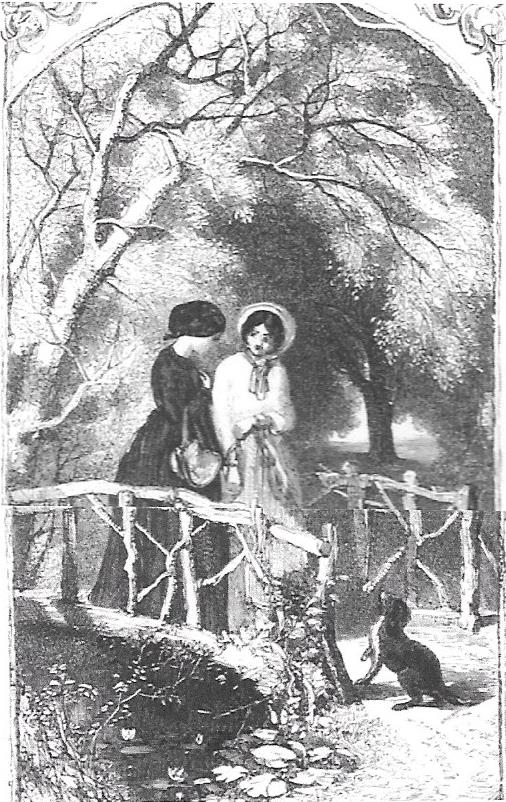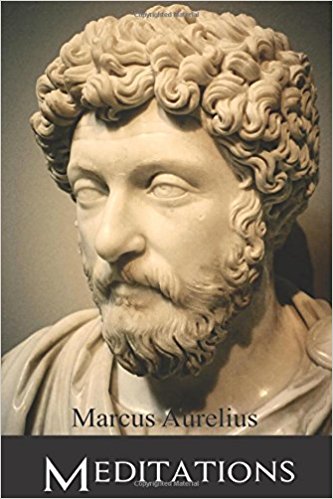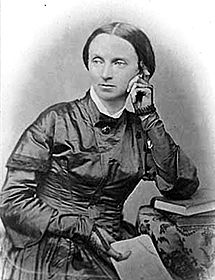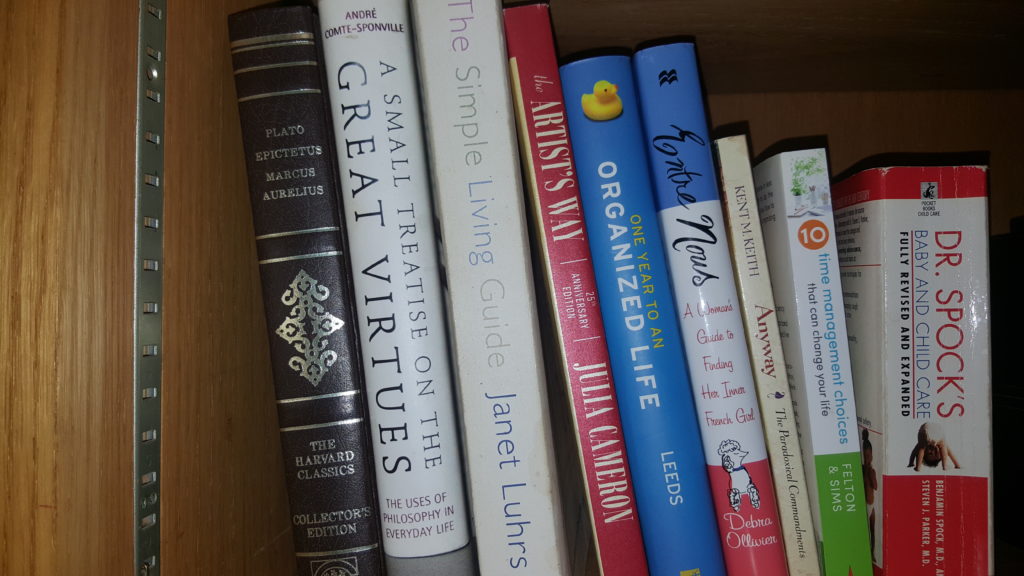
Self-help books have been popular since Sebayt (“Teaching”) was written in Egypt in 2800 BCE. Written in the form of a letter of advice from father to son, it is the oldest known example of a genre that includes Hesiod’s Works and Days, Marcus Aurelius’ Meditations, the Book of Proverbs, Machiavelli’s The Prince and Benjamin Franklin’s Poor Richard’s Almanac. Human beings, bless our far-from-perfect little hearts, are self-improvers.
In the 17th and 18th centuries, “savior vivre” books were indispensable guides for men who wanted to know how to behave in polite society. But the genre really exploded in the United States in the 19th century, which saw the publication of books on topics from cookery and homemaking, to business success, weight loss and self-medication.
Jane Grey Swisshelm’s contribution to the self-help genre was her Letters to Country Girls. The Letters started as a series of columns in her newspaper, The Pittsburgh Saturday Visiter. She meant to write only a dozen columns, but the feature was so well-received that Jane ultimately wrote more than twice that number and collected them into her first published book in 1853.

The purpose of the Letters
Jane specified that she was not writing for middle-class city girls, whom she dismissively described as “these drawling concerns who lounge around reading novels, lisping about fashion and gentility, thumping on some poor hired piano until it groans, and putting on airs to catch husbands.” Her intended audience was girls growing up on the farms of Western Pennsylvania, young women who churned butter, made their own clothing, and might not see town more than monthly or a big city once in a lifetime. She respects these young ladies, thinks them worthy of bettering themselves, and sees herself – a young farm wife herself, before she became owner/editor of a Pittsburgh newspaper – as singularly positioned to advise them.
The letters are written in an intimate, conversational style, with touches of breezy, sometimes scolding humor. They read less like newspaper columns than like letters from a wry, loving aunt only a few years older than the recipient. Jane provides advice on a wide range of subjects: how to keep worms from peach trees, build a wire fence, make different colored dyes, cook peach butter and ketchup, even how to make papier-mache furniture tops and artificial flowers and grapes to adorn readers’ parlors.
“Get yourself a nice little sprouting hoe”
She was adamant, from her first letter, that every young woman must have her own hoe. “Some day when you go on an errand to the village, and ride a horse to be left at the blacksmith’s, just get the man of the anvil to make you a nice little sprouting hoe! You can send him a couple of pounds of butter for it.” She goes on to describe to her readers how they may trick a husband or brother into making a handle for the hoe. “Don’t patch (his) coat until the handle is in the hoe! If that does not do, go to the woodpile some day, about eleven o’clock, and work very busily until they come in for dinner. It will not be ready, you know; and they can put a handle in the hoe while you get dinner.”
With your hoe, she advises her reader, you can dig up woodland wildflowers and small trees to beautify your yard, or a little tansy to keep the worms away from you peach trees, and transplant wild berries and grapevines into your garden. It has other uses: “Sometimes it will do for a cane to help you to spring over muddy places and across runs. When you clamber up steep places you can hook it fast to a tree, bush, or projecting root, to help you up….If you meet a snake, you have a weapon to kill him with…In fact, of the two, a little hoe, as a companion in a morning walk, is decidedly preferable to a full-grown beau.” Jane thus anticipates the guy-code “bro’s before ho’s” by 150 years, and turns it on its head: “hoes before beaus.”
19th-century housekeeping advice
Jane provides advice on efficiencies and economies in housekeeping, not because she believes that housekeeping should be the center of a woman’s existence, but because she understands that it must be done – and, if it is completed efficiently, her readers will have something to spare for self-care and self-improvement. She admonishes her country girls to keep their bodies as clean as their teapots and to care for their complexions as carefully as their carpets.
Love of nature
Jane also urges her girls to cultivate a love of nature. Modern urban people might assume that that would have come naturally to our rural ancestors, but the tone of Jane’s letters hints that country people of 200 years ago saw nature mostly as something they must conquer or hold at bay via endless drudgery. Jane urges her readers to awaken to the beauty around them. She especially advocates cultivating a love of flowers. And she writes this about humble moss: “See how thickly it covers the old rotten log, as if it would hide its decay from those tall forest lords who now stand where it once stood…while this old tree that perhaps bore the very acorn they sprang from, is mouldering to dust at their feet. The green leaves it once bore, the rough bark that protected it, are gone; but the beautiful moss creeps over and covers it up so lovingly. Moss is like the mantle of charity, too, for it covereth a multitude of faults.”
She wants her readers to tend to their souls, as well as their bodies. Jane is an advocate of reading, but not for pure entertainment. She is scornful of city ladies who lounge around reading romantic novels. She advocates instead for daily Bible reading, and for forming Reading Societies, where country folk can socialize and discuss serious books and current events.

Feminism in the Letters
Jane writes from a feminist perspective. In letter #10, she excoriates men who see their wives and daughters as they see their farm animals. The women in their families are resources, to be worked to exhaustion in the fields and barns, and then come back to the house to cook, churn and scrub while the men rest from their labors. Women had no vote in the 19th century, and little legal recourse. A woman’s labor and property belonged to her husband. Jane points out that the legal situation encouraged men to see women as property. “If Sallie has no right to hold office in church or state – if she is to submit to me in all things, of course I must be wiser than she, and better too. She is ‘heaven’s last best gift to man’, an’ mighty useful one can make her!” But, she goes on, “let one presume to use her mental powers – let her aspire to turn editor, public speaker, doctor lawyer – take up any profession or avocation which is deemed honorable and requires talent, and O! bring the Cologne, get a cambric kerchief and a feather fan, unloose his corsets and take off his cravat! What a fainting fit Mr. Propriety has taken!”
But…
Jane was a farmer’s wife herself, and understood how hard the work was. She didn’t object to a woman helping out with the men’s work on the farm. In #14, she writes, “If you have plenty of help in the house, there is nothing unfeminine or unhealthy in tossing hay, or raking grain.” But her point is that such assistance should go both ways. “When she requires his assistance at her work, let him return the favor.” She is ever an advocate for a marriage of equals, where husband and wife support each other, ever an advocate for women getting enough relief from drudgery to have a life of the soul and the mind, ever an advocate for education and self-improvement.
The book is a genuine delight, and available to read on Google Play for free. Just follow this link: https://play.google.com/books/reader?id=Rt4-AQAAMAAJ&printsec=frontcover&pg=GBS.PA7

Sources
Swisshelm, Jane Grey; Letters to Country Girls, New York: J.C. Riker, 1853.
https://en.wikipedia.org/wiki/Self-help
http://www.bbc.com/culture/story/20140805-the-ancient-roots-of-self-help

this is wonderful! as a fellow author, would you be so kind as to guest blog post for my site? if you’re so inclined, here’s a link to general guidelines: https://wp.me/p6OZAy-1eQ
Sure, I would be glad to guest post. And you would certainly be welcome to guest post on my blog as well. I haven’t checked out your blog yet, but I will and then I will be in touch again.